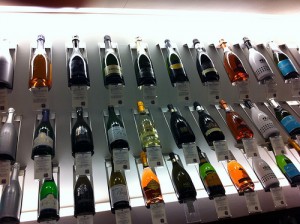Retailers play many psychological tricks with us. We’re aware of many of them, such as the common “99 cent” trick, so you see 19.99 and it feels much lower than 20. But one of the most interesting phenomenon to me is anchoring.
An example of anchoring was a famous study where individuals in one group were shown a large number like “99”, and then a bottle of wine, while others were shown a small number “1” and then the same bottle of wine. Each group was then asked to guess the price of the bottle of wine. People in the “large number” group gave a considerably higher value to the bottle than the group that was shown a small number, even though in both cases the number had nothing to do with the wine
While you may run into these tricks in stores, where I think we often see it in our daily lives is when we make a big purchase, and then justify otherwise large purchases much more easily.
For example, you’ve saved up to take your family on a trip to Europe. You budgeted and saved well, and the trip cost you $5,000. You normally would never eat out at a place that would cost more than $20 a night, but once in Europe you find yourself going to a $300 restaurant. “Eh, what’s the difference with $300 when we just spent $5,000”.
Or you just bought a $20,000 car and the dealer talks you into a $1,000 add-on you didn’t originally want (“What’s another $1k compared to the 20 we’re spending?”).
This kind of logic doesn’t really make sense. The purchase of something large has nothing to do with the decision on another type of spending. It’s the same anchoring that’s occurring with the numbers and the wine.
This is how starting with a small debt quickly leads to a larger debt (“Eh I already owe on my credit card, what’s another $100?”).
How can you control this? Well, it’s important to look at each purchase as a separate good. Make a rule for yourself, if something is over $XXX (say $100) you’ll sleep on it for the night. Make the decision separate from the larger decision, and most importantly compare it to your budget.

